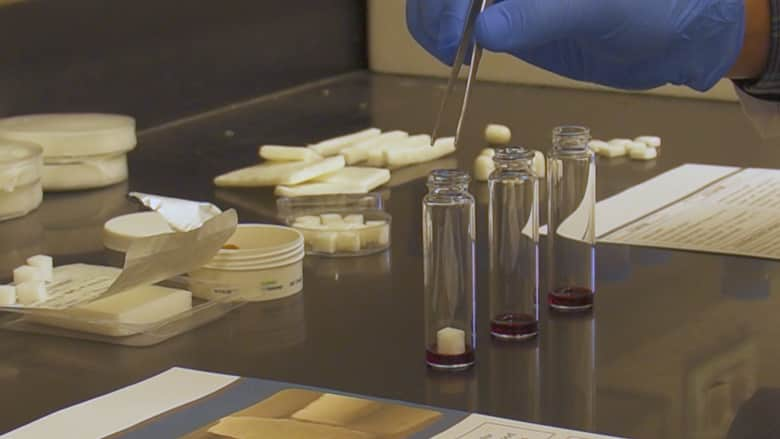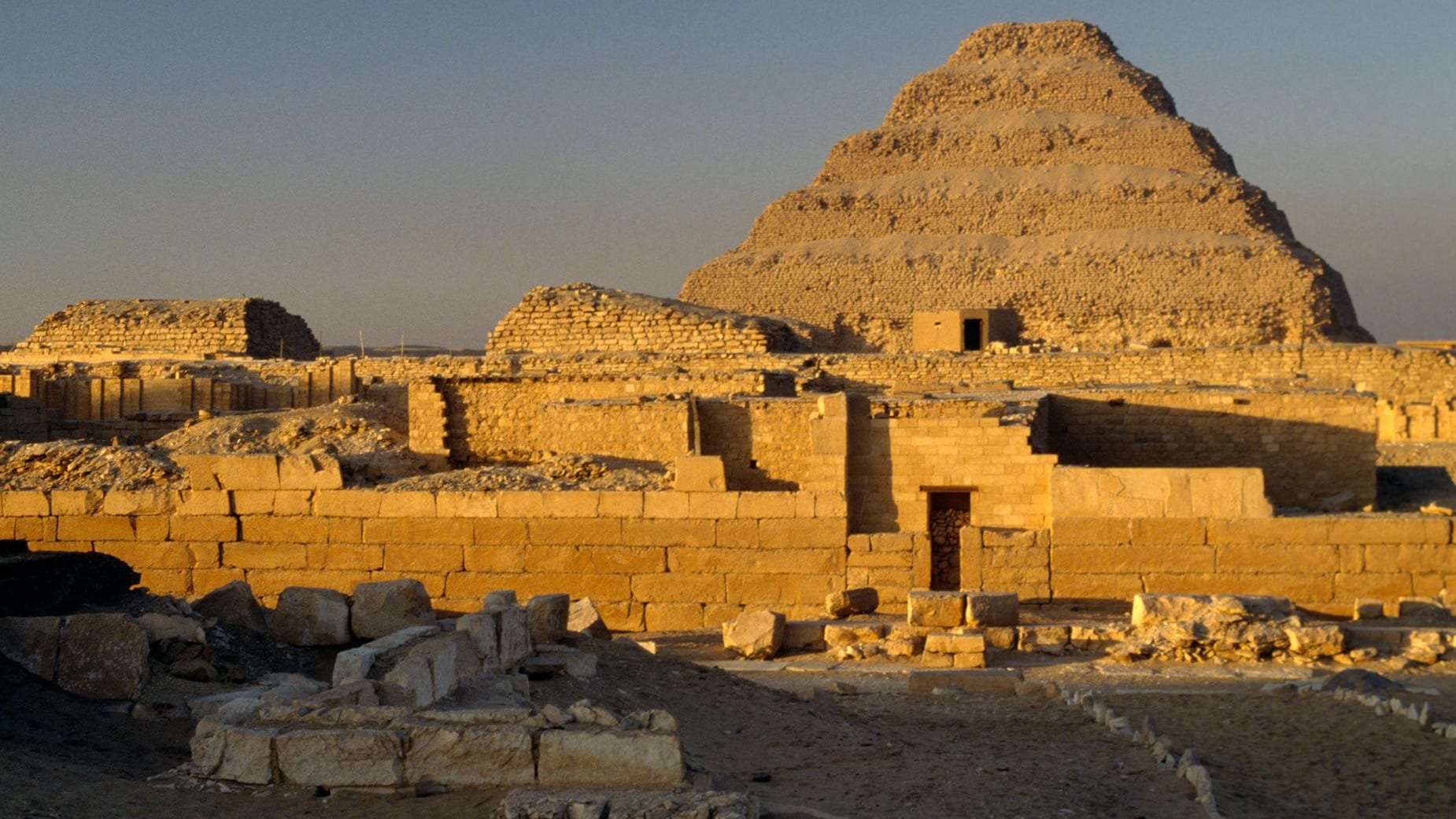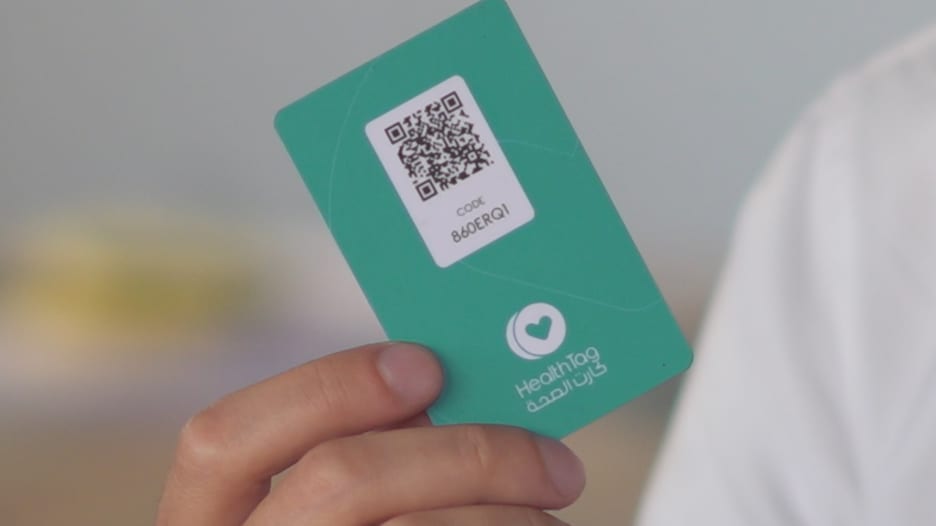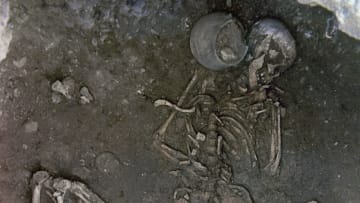دبي، الإمارات العربية المتحدة (CNN)— لسنوات، ناقش علماء المصريات كيفية بناء الأهرامات الضخمة في مصر القديمة منذ أكثر من 4 آلاف عام.
الآن، يقدم فريق من المهندسين والجيولوجيين نظرية جديدة مفادها أنّ القدماء استخدموا جهاز رفع هيدروليكي جعل الحجارة الثقيلة تعوم لأعلى منتصف أقدم هرم في مصر باستخدام المياه المخزنة.
وبنى المصريون القدماء الهرم المُدرَّج للفرعون زوسر في القرن السابع والعشرين قبل الميلاد، وكان أطول هيكل آنذاك، فبلغ ارتفاعه حوالي 62 مترًا.
ولكن بقيت طريقة تشييد النصب التذكاري، الذي يصل وزن بعض الحجارة فيه إلى 300 كيلوغرام، لغزًا لقرون، وفقا للدراسة المنشورة في مجلة "PLOS One"، الإثنين.
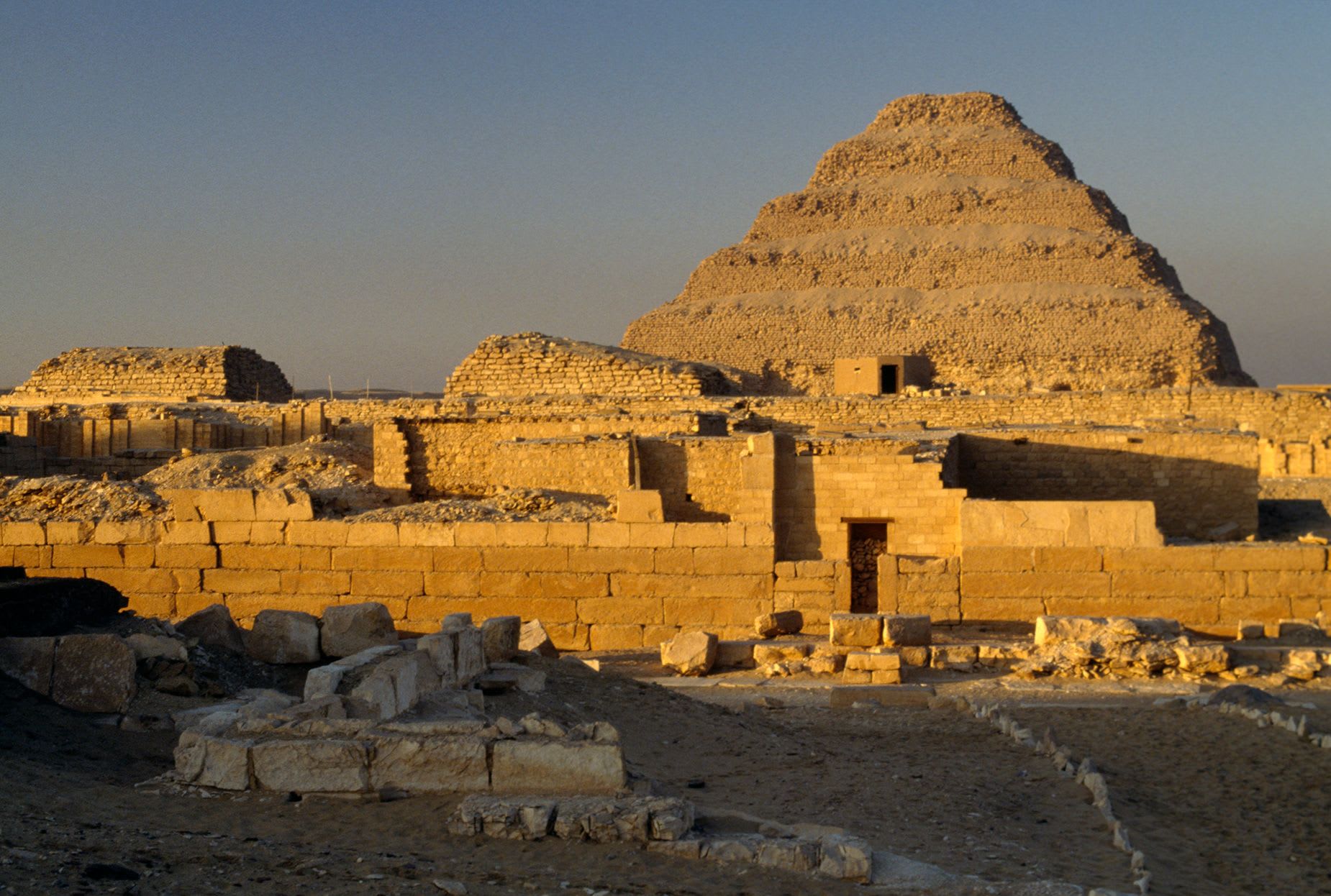
وقال المؤلف الرئيسي للدراسة، الدكتور خافيير لاندرو الذي يشغل منصب الرئيس التنفيذي لـ" Paleotechnic "، وهو معهد أبحاث خاص في باريس يدرس التقنيات القديمة: "ناقَشَت العديد من المؤلفات المفصلة إجراءات بناء الأهرامات، وقدمت عناصر ملموسة، لكنها عادةً ما تركز على الأهرامات الأحدث، والأكثر توثيقًا، والأصغر حجمًا في المملكتين الوسطى والحديثة.. ولكن ماذا عن أهرامات المملكة القديمة الأكبر حجمًا بكثير؟".
وباستخدام مقاربة متعدد الاختصاصات، كانت الورقة الجديدة أول مَن أبلغ عن نظام يتوافق مع البنية الداخلية للهرم المدرَّج، كما كتب المؤلفون.
وكان من الممكن وجود نظام معالجة مياه معقد سمح بوجود مصعد يعمل بالطاقة المائية داخل العمود الرأسي الداخلي للهرم.
وبحسب الدراسة، كان بإمكان نوع من العوامات رفع الحجارة الثقيلة إلى أعلى منتصف الهرم.
ومع أن النظرية تعتبر "حلًا مبتكرًا"، إلا أن بعض علماء المصريات غير مقتنعين، فالنظرية الأكثر شيوعًا تتمثّل بأن المصريين القدماء استخدموا المنحدرات وأجهزة النقل لوضع الكتل الثقيلة في مكانها، بحسب عالم المصريات، الدكتور ديفيد غيفريز، وهو عالم متقاعد، وكبير المحاضرين في علم الآثار المصرية بكلية لندن الجامعية، وغير المشارك في الدراسة.
إليك ما يقوله الخبراء حول النظرية الجديدة.
كانت صحراء مصر حقل سافانا في الماضي
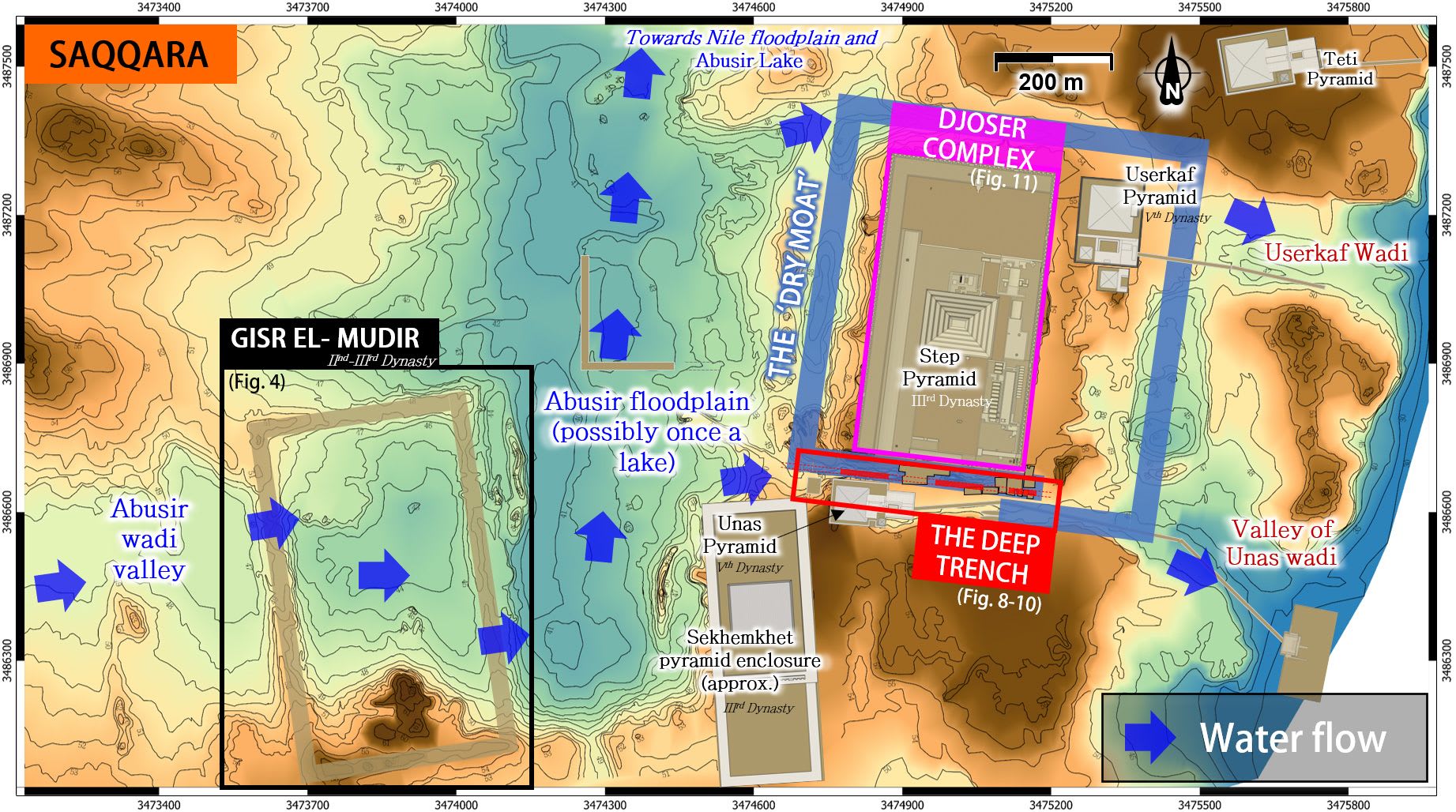
اقترح فريق الدراسة أن المياه من الجداول القديمة تدفقت من غرب هضبة سقارة إلى نظام من الخنادق والأنفاق العميقة المحيطة بالهرم المدرج.
ويُحتمل أن المياه تدفقت أيضًا إلى "جسر المدير"، وهو هيكل مستطيل من الحجر الجيري تبلغ أبعاده 650 و350 مترًا، كان من شأنه أن يكون بمثابة سد حاجز.
وربما قام الهيكل، الذي اعتُقد أنه حصن، أو ساحة احتفال، أو حظيرة للماشية سابقًا، بالتحكم في مياه الفيضانات الغزيرة، وتخزينها، بالإضافة إلى تصفية الرواسب والأوساخ كي لا تسد ممرات المياه.
ولن يسمح نظام معالجة المياه النظري بالتحكم في المياه أثناء الفيضانات فحسب، بل سيضمن أيضًا "جودة المياه، ووجود كمية كافية منها لأغراض الاستهلاك، والري، والنقل، أو البناء"، بحسب ما أفاد المؤلف المشارك في الدراسة، الدكتور غيّوم بيتون، الباحث في المعهد القومي الفرنسي لبحوث الزراعة والغذاء والبيئة (INRAE).
وأشار المؤلفون إلى العديد من الدراسات السابقة التي وجدت أن الصحراء الكبرى شهدت هطول أمطار منتظمة منذ آلاف السنين مقارنةً باليوم.
وكانت المناظر الطبيعية تشبه السافانا، ومع ذلك، هناك جدل حول الفترة التي كانت الظروف المناخية أكثر رطوبة فيها.
ومن ناحية أخرى، يناقش الخبراء ما إذا كان من الممكن توفر ما يكفي من الأمطار المستمرة لملء الهياكل التي من شأنها دعم المصعد الهيدروليكي.
واتفق مؤلفو الدراسة على أنّه من غير المرجح امتلاء النظام بالمياه بشكل دائم، وناقشوا بأنه من المرجح أن تكون الفيضانات المفاجئة في ذلك الوقت، هي ما وفرت ما يكفي من المياه لدعم الرفع الهيدروليكي أثناء بناء الهرم.
ومع ذلك، لا تزال هناك حاجة إلى مزيد من الأبحاث لمعرفة مقدار هطول الأمطار والفيضانات المحتملة خلال هذا الوقت، كما أشار الباحثون في الدراسة.
